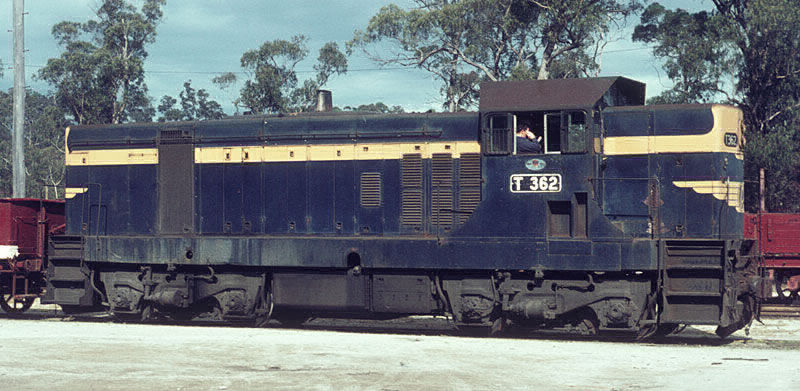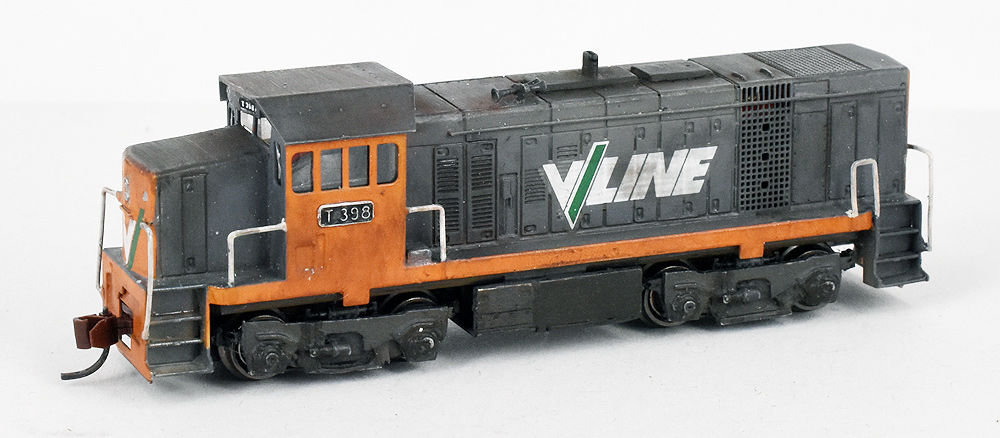Victorian Railways - V/Line T class T357 -366
N Scale Kit no: SDLoco4 - Requires Bachmann S2/S4 mech
Brief history
The T class became the largest diesel class on the Victorian Railways and were built by Clyde’s Granville workshops over 13 years from 1955-1968. As a consequence, there are 5 versions but the group is commonly called by the 3 versions of “Flat Top”, “High Nose” and “Low Nose”. They were purchased to serve the states branch lines and to replace the ageing K’s and the newly arrived J class steam locos. This the 2nd variation of the high nose entered traffic between December 1961 – May 1962 and were assigned all manner of jobs with other classes.
For the majority of their life, they were painted Blue & Gold of the Victorian Railways and then, later on, 5 were painted in the V/Line orange and grey. Towards the end of their working lives, they received the ‘chopped’ valance treatment which altered their appearance but maintenance was easier. With the arrival of larger locos in the form of G’s and the aging B class being rejuvenated into the A class most of the fleet was scrapped or withdrawn by 1989. Luckily 2 units have made it into preservation and currently 1 other is still earning its keep with CFCLA.
The kit
This kit is not for your average builder and requires dedication but you will get a fantastic result from the effort you put in. If you have put together a Y class kit this one is even easier.
The kit includes the brass etch, detailed items including state of art 3D printed parts, cast bogie side frames, laser cut components, laser cut cab glazing, all 10 class number boards in paper and brass, marker light boards, acolour matched VR chevrons and V/Line decals. 8 pages of instructions with photos that will help guide the builder through the various steps along the way.
Requires Bachmann S4 mech or Atlas S2


